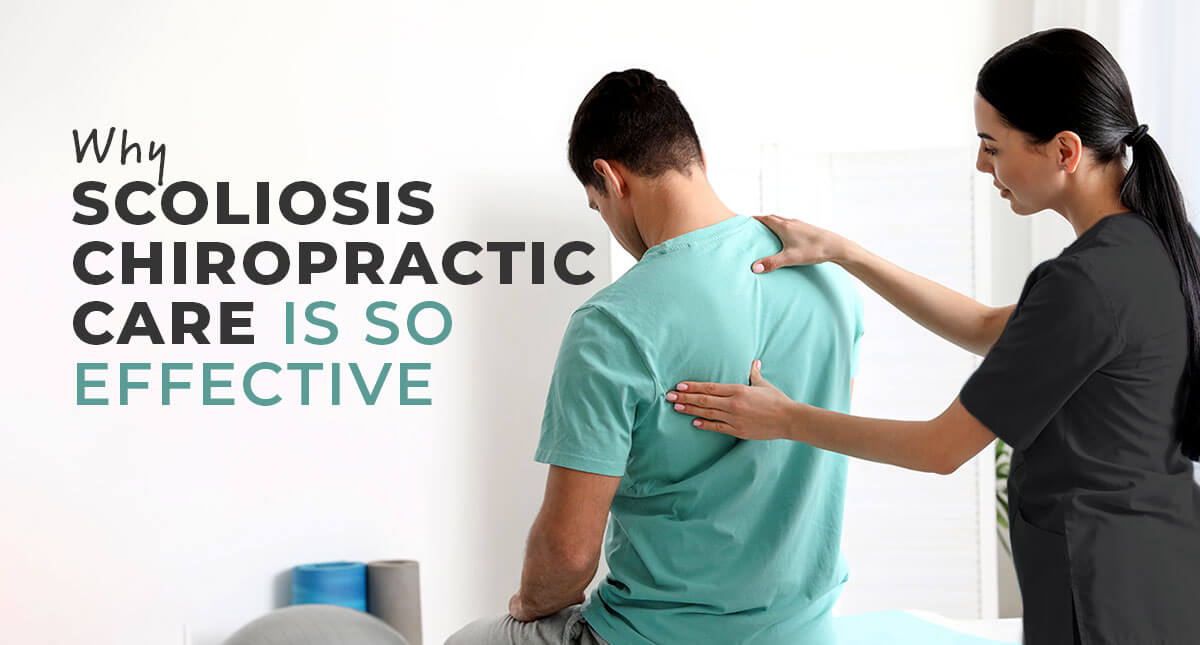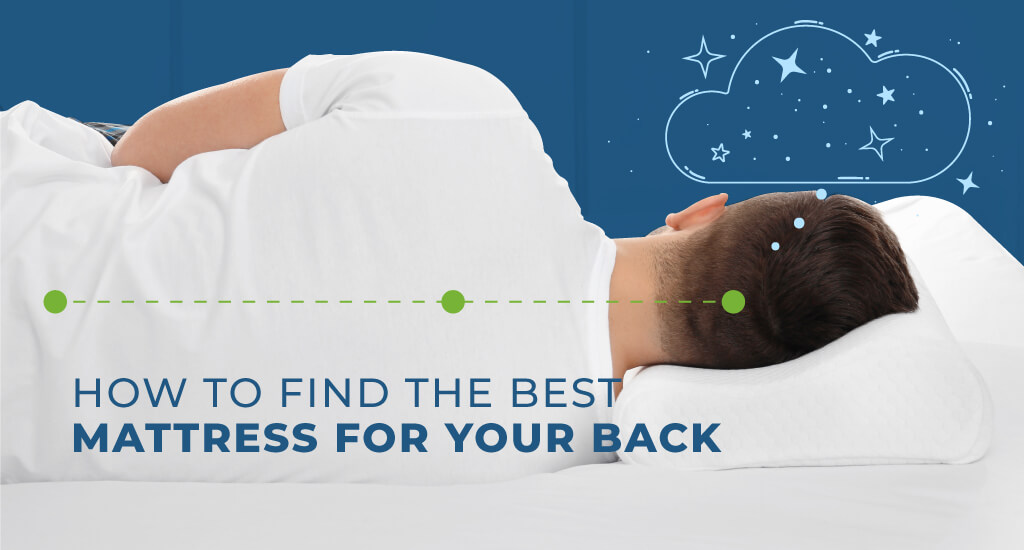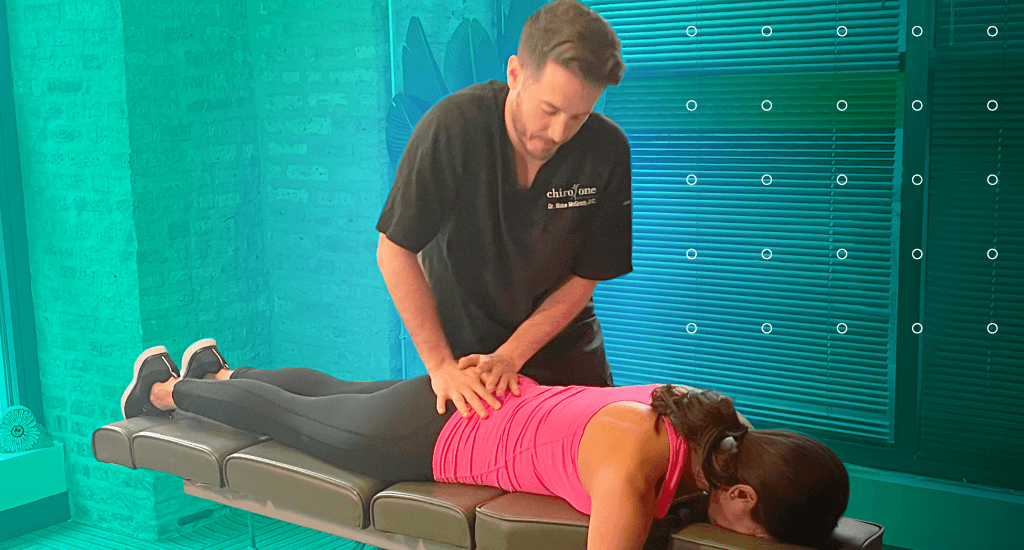Living with Scoliosis Pain?
Take the first step toward relief.
Overview
73% of people with scoliosis report experiencing pain as a result of the condition. In fact, the incidence of low back pain is almost twice as high in people living with scoliosis as those without. Find relief from scoliosis pain and get back to doing the things you love.
Dr. Lea Holcomb | Chiro One of Vernon Hills, IL
What Is Scoliosis?
Scoliosis is any abnormal sideways curvature of the spine. There are two general categories for scoliosis:
Structural scoliosis. By far the most common and most serious of the two categories of scoliosis, it involves spinal rotation in addition to the side-to-side curvature of the spine. This type of scoliosis affects the spine’s structure and, without treatment, is considered permanent.
Types of structural scoliosis include:
- Idiopathic scoliosis, which accounts for roughly 80% of cases. It typically presents during adolescence but can also start in early childhood or infancy. The cause is currently unknown, but genetics may play a role.
- Degenerative scoliosis. Adult scoliosis that occurs later in life as the joints in the spine degenerate.
- Neuromuscular scoliosis or myopathic scoliosis. This sometimes develops in individuals who cannot walk due to a neuromuscular condition such as muscular dystrophy or cerebral palsy.
- Congenital scoliosis is a rare condition that develops in utero and is present in infancy. It can result from malformations in the vertebrae or other causes, and in most cases, must be corrected surgically.
Nonstructural scoliosis. Also known as functional scoliosis, it results from a temporary cause and only involves a side-to-side curvature of the spine (no spinal rotation), leaving the spine’s structure normal.
Common Symptoms of Scoliosis
The most common symptoms of scoliosis are:
- Asymmetry in the shoulders
- One shoulder blade that protrudes further than the other
- An uneven waist height
- One hip that sits higher than the other
- The rib cage may protrude forward on one side of the body
- One side of the back will appear more prominent when bending
In most people living with scoliosis, the spine will not only curve, but rotate or twist side to side, which is what causes asymmetries and protrusions of the ribs or muscles.
Is Your Scoliosis Pain Chronic Pain?
Doctors categorize scoliosis pain in these three ways:
- Acute scoliosis pain: this is pain which comes on suddenly and usually lasts a few days to a few weeks
- Subacute scoliosis pain: this type of pain can appear suddenly or over time, and typically lasts 4 to 12 weeks (about 3 months)
- Chronic scoliosis pain may come on quickly or slowly, lasts longer than 12-weeks, and occurs daily – to the point of disrupting your life
Chiropractic care is effective for treating pain at all stages – acute, subacute, and even chronic pain.
Common Causes
Causes of Scoliosis
Unlike other pain conditions, the most common type of scoliosis cannot be caused by an accident or injury. At this time, the most common type of scoliosis has no confirmed cause. However, less common types of scoliosis may be caused by:
- Certain neuromuscular conditions, such as cerebral palsy or muscular dystrophy
- Birth defects affecting spinal development
- Chest wall surgeries in infancy
- Injuries or infections of the spine
- Spinal cord irregularities
- Spinal degeneration during adulthood
Risk Factors
Common Risk Factors for of Scoliosis Pain
Less severe instances of scoliosis may not be painful, but in more serious cases, scoliosis can cause pain by:
Putting pressure on your spinal disks and facet joints
Causing muscle pain
Stretching or irritating nerves
Straining joints, causing them to become inflamed
Scoliosis can affect your posture, causing further neuromuscular imbalances
While scoliosis cannot be reversed, chiropractic care can provide relief from scoliosis pain.
When to Seek Treatment
When to Seek Treatment for Scoliosis Pain
While we believe all pain should be evaluated, scoliosis that checks these boxes could be serious, and is likely to require care. Consult a doctor if your scoliosis pain:
- Is severe or is impairing your mobility
- Is accompanied by numbness or tingling
At Chiro One, we don’t believe anyone should have to live with pain. If scoliosis pain is disrupting your life, chiropractic care from Chiro One can help. Learn more about how we diagnose pain, and what to expect at your first chiropractic appointments.
3 Tips for Preventing Scoliosis Pain
Daily stretching can improve your overall spinal health and help restore some neuromuscular alignment to areas of the body affected by scoliosis.
Choose a firm, high quality mattress when possible, and avoid sleeping on your stomach.
Staying active can help keep your muscles – particularly core muscles – strong to support a healthy spine. Regular exercise can also help keep you flexible and mobile.
“I have severe scoliosis curves and Dr. Emily helped reduce my discomfort...The staff are all professional and courteous...great place to assist in your wellness journey!”
– Alex B.
Find Relief with Help from Chiro One
Chiro One’s gentle chiropractic care delivers strong patient outcomes with exceptional levels of patient satisfaction. Here’s how Chiro One’s non-surgical, drug-free approach effectively treats the leading causes of scoliosis pain:
Thorough Upfront Evaluations
To assess your physical health, understand your daily routine and goals
Gentle Chiropractic Adjustments
To relieve pain and improve joint mobility and function
In-Clinic Therapies
To help you build strength, improve your range of motion, flexibility and balance, anddevelop muscle memory for longer lasting results
New Patient Offer
Exclusions ApplyChiropractic Evaluation
- Diagnostic Exam
- Consultation
- Personalized Care Plan Recommendation


